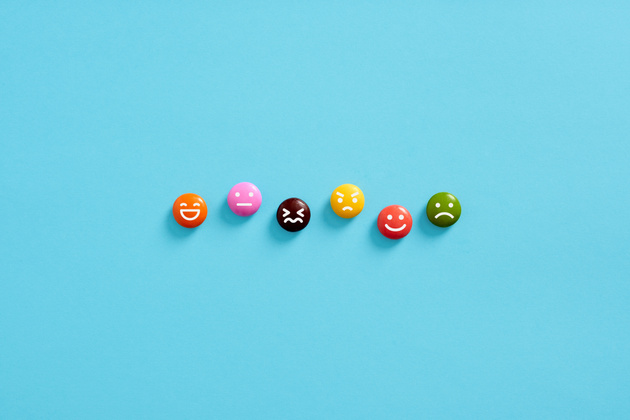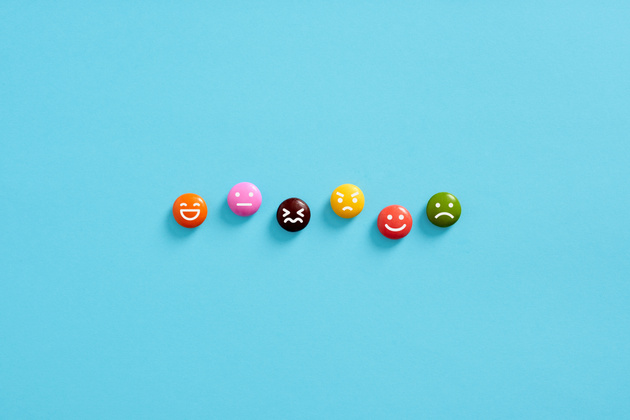Pay attention to sudden emotional changes
Every person wants to be happy. However, Anadolu Health Center Psychiatry Specialist Dr. stated that the presence of extreme emotions experienced for no reason, even if it is happiness, may be a symptom of mood disorder. Cem Hızlan “Mood disorders can be treated. When treated correctly, it usually does not leave a scar that can affect a person’s daily life. However, it should not be forgotten that there must be a process to call a situation mania, depression or mood disorder.”

Ups and downs over a period of time, such as feeling extremely energetic, healthy and happy for no apparent reason, or feeling sadder and more depressed than ever before mood disorder is one of the symptoms. Psychiatrist Dr. states that, as the name suggests, mood disorder is a disease that particularly concerns the emotional domain. Cem Hızlan “The prevalence of mood disorders in society is much less dependent on socioeconomic conditions compared to anxiety disorders. For this reason, it is a disease that is less visible and remains in the background compared to anxiety-related disorders. “However, the increasing interest in psychiatry and psychology and the fact that the unique characteristics of mood disorders are being discussed more in the field of literature and visual arts have increased the curiosity about the problem and the desire to learn,” he said.
There must be a process to call a situation mania or depression.
Pointing out that emotions can be considered as a measurement tool that shows how appropriate and positive the relationship between the environment and humans is, Anadolu Health Center Psychiatry Specialist Dr. Cem Hızlan “The more positive the environment is for us in general, the more comfortable we feel, willing to open up to the environment and alive. An environment where there is no danger and we are with the people we love naturally makes us feel more energetic, stronger and willing to open up to the environment. In the opposite situation, we are expected to feel defensive, introverted, anxious and unhappy, which is actually normal. You constantly feel pessimistic, unhappy, helpless, but if there is no real reason for this in your ongoing life, it would be more accurate to call this situation depression. We can also describe the opposite of the same disruption as an obstacle. So you constantly feel absurdly good, strong, healthy and happy, but there is no real reason for this in your life. However, it should not be forgotten that there must be a process in order to call a situation mania or depression. “Daily emotional fluctuations, emotional changes that change during the day depending on changing factors, are not expressed as mania or depression,” he said.
Not every emotional ups and downs are a problem
Underlining that it is normal for emotions to fluctuate and that current conditions may constantly change, Dr. Cem Hızlan: “Accordingly, our emotions are constantly in a state of ups and downs. We can easily notice this variability when we consider day-to-day and longer periods such as monthly or seasonal. It is healthy for our emotions to vary depending on circumstances and our inner state. “Just as feeling bad when bad things are happening is not depression, feeling happy and excited when good things are happening is not a mania,” he said.
Mood disorders can be confused with anxiety disorders
Anadolu Health Center Psychiatry Specialist Dr. says that the symptoms of depressive attacks can be easily confused with other very similar disorders. Cem Hızlan: “Depressive mood adjustment disorders and mixed type anxiety and depression disorder, which arise especially as a reaction to severe life events, are disorders that are often confused with depression, which is among the mood disorders, and must be carefully differentiated. Both of these disorders are included in anxiety disorders. “Its connection with daily life events and its ability to be triggered by psychosocial stress factors are at the forefront,” he explained. Dr. Hızlan stated that mood disorders are clinically seen in several forms and gave information about subtypes of mood disorders such as bipolar disorder, major depression, recurrent depressive disorder and frequent-cycling mood disorder, and persistent mood disorders:
- Bipolar disorder, major depression episode: It is a condition in which depression attacks and mania attacks occur at different times. Bipolar mood disorder describes episodes of mania and depression that sometimes occur one after another throughout life and sometimes recur at intervals that can last for years. It can occur at any age. It is generally accepted that it is not a disorder that progresses only with recurrent mania attacks, and that there must be depression attacks in between, even if their severity is low.
- Recurrent depressive disorder: It is a condition in which recurrent depression attacks occur. In these disorders, attacks must last a certain period of time; Attacks are not used to describe rapid daily or weekly emotional changes. Short-term, sudden emotional changes should be considered more of a symptom of anxiety disorders. Depression and recurrent depressive disorder, as the name suggests, is a process that does not include a mania period and continues with depression attacks.
- Frequently cycling mood disorder and dysthymia: They can be thought of as disorders that spread into daily life, last a long time and are under almost constant influence. Dysthymia, which is considered a persistent mood disorder, is a disorder in which a mild state of depression, whose clinical symptoms are subtle but whose presence is always felt, continues for a very long time. Frequently cycling mood disorder can be thought of as a condition in which periods of mood changes continue for a week or a few weeks. Here too, although mood changes are felt, the clinical symptoms are faint and of low intensity.



